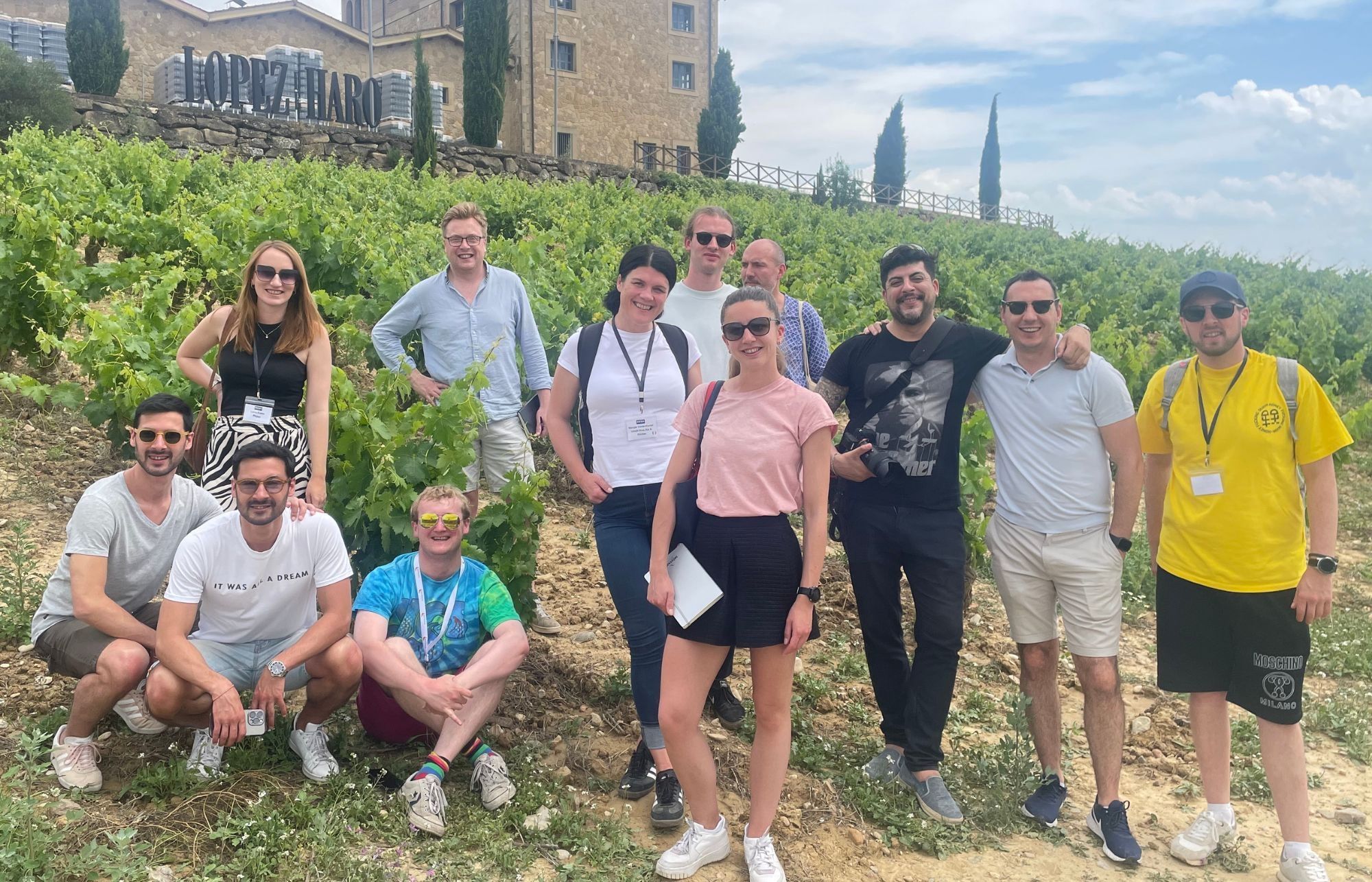Following on from my three articles on the zones of Rioja earlier this spring and summer to promote the inaugural Rioja Somm'er School, I was lucky enough to be asked to join the chosen group, selected from across the UK and Ireland, on their immersive week of discovery to this most famous of Spanish wine regions.
My first time in Rioja with the Consejo was not too long ago, so I can distinctly remember the way that each separate visit opens your eyes to another angle of the modern face of this storied region.
It seems so obvious for me to say now that Rioja is much, much more than simply three zones - Rioja Alavesa, Rioja Oriental, Rioja Alta - and one dominating grape variety (Tempranillo), but during this trip I saw first-hand a group of exceptional wine professionals take their first steps onto the soil of Rioja and go through that same transformative journey that I had been on in the recent past.
Detailed map a sign of things to come
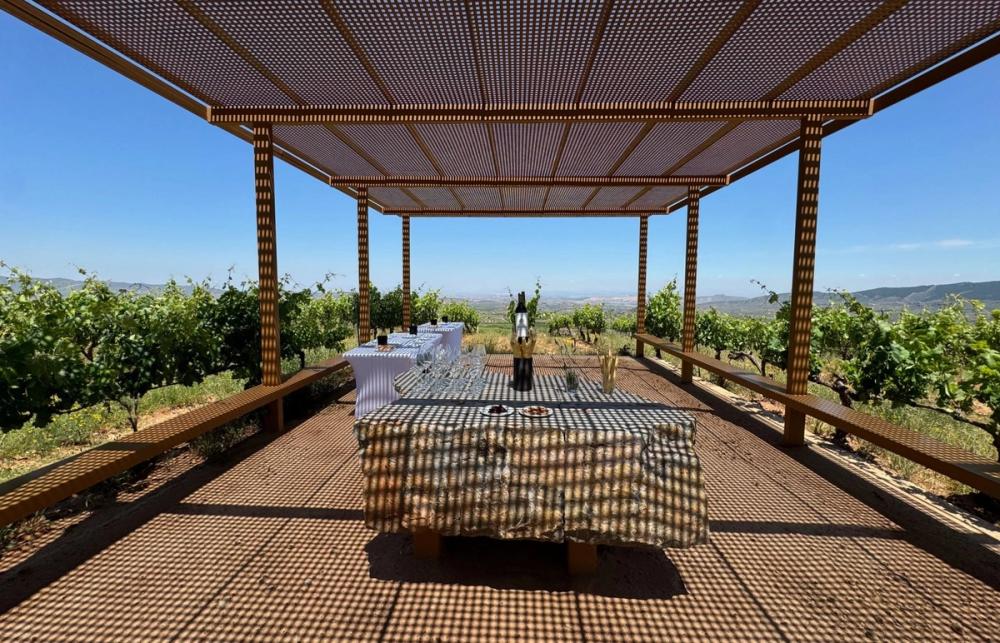
The view from Ontañon’s La Pasada vineyard
On morning one, we huddled together in the Consejo offices, around the large boardroom table that hosts the meetings and debates of the great and the good of Rioja. We were there to meet Iñigo Tapiador Larrañaga, director of global marketing and communications for Rioja Wine.
In a warm room the morning after a long day of travelling, many could be forgiven for not being 100% all there, but as early as slide one, notepads were opened, and scribbling commenced.
It was a detailed map of the Rioja region, much more detailed than most have seen before. The Rio Ebro was joined visibly by its many tributaries that play such a vital role in the climate, soils and aspects available across Rioja. The Sierra de la Demanda and Sierra de Cantabria were joined by the increasingly referenced Montes Obarenes in the west and Sierra de Yerga in the east, as well as by the likes of the relatively unknown Sierra de la Hez and Sierra de Alcama. From morning one, the gauntlet had been laid down for the constant information flurry that was to come.
This 2-D expression was brought screaming into 3D wonder as we departed the bus later that day to visit the La Pasada vineyard of Bodega Ontañon, at 840m above sea level near the town of Quel in Rioja Oriental.
Export manager, Conrado Herrero, revealed that the plot is one of the last harvested in the whole of Rioja. “The altitude means that the summer temperatures never rise above 30-32 degrees, whilst it drops to 5-10 degrees each night,” said Herrero. “Our founder Gabriel was called ‘the Crazy of Quel’ for planting this plot up here but we’re incredibly lucky he did!”
The bright red fruit and spiciness of the Crianza, and the fresh and long-lasting nature of the Graciano portion in the Reserva blend are testament to this wonderful site for grape growing.
Huge interest in expanding varietals
There are 14 varieties that are allowed in total. Although a small fraction of these grape varieties was planted around a century ago, the change in attitude to single varietals and terroir driven plantings has meant that Rioja has managed to avoid the monovarietal status that Tempranillo looked set to establish in the later part of the 20th century.
Recovered and recently renewed varieties such as Graciano, Mazuelo and Maturana are now entrusted by winemakers all over Rioja to produce some incredible varietal wines or play a larger role in exciting new blends and styles.
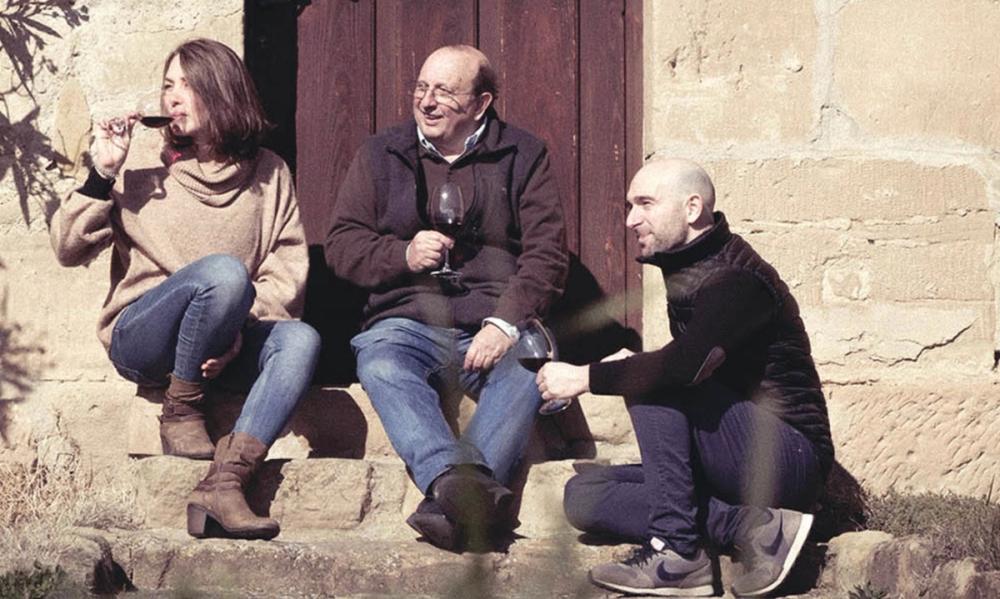
Bodega Miguel Merino is making wine from vines in Briones
At Bodega Miguel Merino we were met by Miguel’s wife Erika, a renowned biologist and viticulturist. She explained that her father-in-law, also named Miguel, began making wines in 1994 aiming for the classic 1950s styles of Reserva and Gran Reserva which still make up a cherished segment of their portfolio to this day.
But Erika and her husband were keen to explore the soils and possibilities of Briones. “We only have vines in Briones”, she said, “which is actually the same size as Priorat at around 1,200 hectares. We have four very distinct soil types and felt a Burgundian, terroir-driven approach could be really interesting.”
They used this to full effect, splitting the 13 hectares they run into 33 separate plots, all micro-vinified, and then used to produce 8 wines. This includes the Quinta Cruz 100% Mazuelo 2021, grown on steep, poor, pebbly soils, and delivering gorgeous, deep dark plums and cherries, liquorice, olives and a savoury earthiness to balance it all out. Although only 3,000 bottles are produced per year, it has gained a huge following for the distinct changes from vintage to vintage.
Laure Kwaczewski, sommelier at the stunning Chapter One Restaurant in Dublin was hooked. “It’s such a great wine,” said Kwaczewski, a couple of days later.“One of the first we tried but one that really stood out as one of my favourites and most interesting of the trip.”
Icons of Rioja draw a crowd
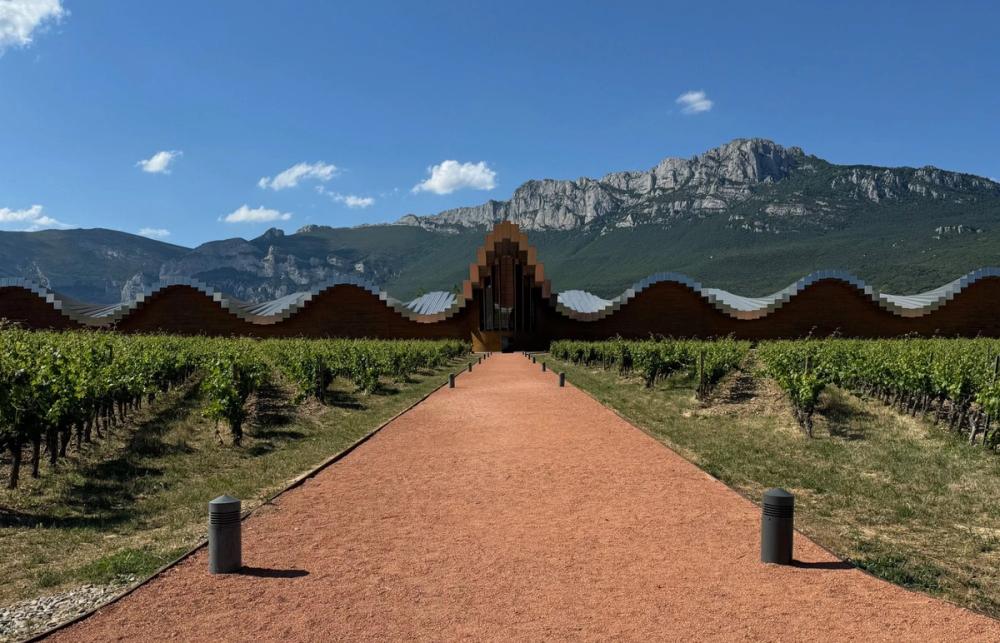
The stunning Bodegas Ysios
We finished day one with a visit to one of the most iconic wineries in the world, let alone Rioja. Bodega Ysios, is nestled in the heart of the northerly Rioja Alavesa zone, with its famous, flowing roof designed to mirror the peaks of the Cantabrian mountains that sit only just behind creating an unbeatable visual backdrop.
Clara Canals, head winemaker at Ysios, toured us through the winery, designed in 2001 by renowned architect Santiago Calatrava. Initially designed as a boutique winery, the team now produces 120,000 bottles a year across 14 different wines in the portfolio.
“We look after about 40 hectares now, split across 52 plots” explained Canals. “Our aim is to show off the incredible diversity on offer in Alavesa.”
This includes three Viñedos Singulares, with two from around the village of Elvillar and one from near Leza. In fact, only the fruit for their rosé comes from outside the zone (Garnacha from Tudelilla in Oriental).
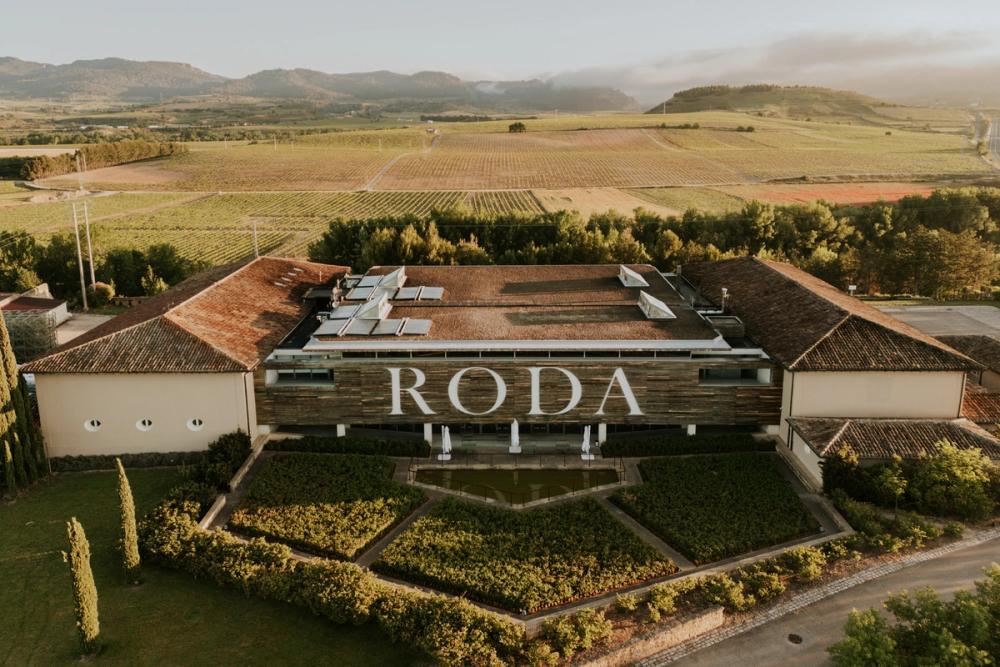
Bodegas Roda was a big highlight of the trip for the sommeliers
Aside from the architecture and the stunning landscapes, Rioja also boasts many wines who have become global icons in their own right. Next morning’s trip to Haro to visit Bodegas Roda allowed an excited group of sommeliers to try the famous Roda Cirsion.
Named by Simon Field MW as one of his Rioja icons in 2024’s Decanter guide to Rioja, this plush, deep, brooding red wine is made from small berries that taste almost like candy off the vine. The high levels of tannins mean that the wine doesn’t need long oak ageing, seeing just eight months, and producing something truly unique in Rioja.
In a trend which has seen Roda for many years define their wines through terroir as opposed to ageing, the visit to their panoramic Perdigon vineyard put the mountains, rivers, winds and weather all in context for the group. Damien Marique, head sommelier at the five-star Ballyfin Demesne hotel, was impressed. “I just want to go back now,” enthused Marique. “The experience, the winds, the views, it made it all so clear what Roda are aiming for.”
Classic Rioja still impresses
Our visit to Bodegas LAN exposed the group to the idea of larger scale Rioja. International sales director, Trinidad Villegas, and director of marketing, Alberto Saldon, began with a trip to the barrel room. This group of sommeliers, the majority of whom were visiting Rioja for the first time, had never seen anything like this.
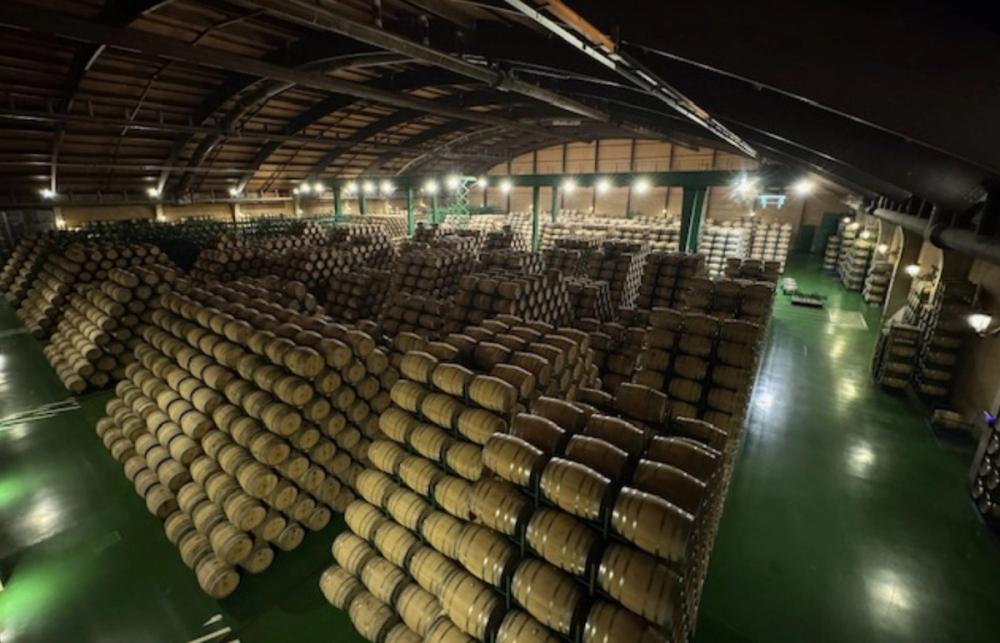
Nearly 20,000 barrels at Bodegas LAN
Over 19,000 barrels looked after by just three staff using specially adapted ship loading equipment developed in Bilbao was a thing of pure wonder. This was made all the more wondrous when the group were informed that at only 4.5 million bottles per year, LAN only considered themselves a medium sized winery in Rioja. Having visited the barrel rooms at both Campo Viejo and Faustino, I can understand their sentiment.
The tour progressed to a tasting session that was one of the most beautifully judged and interesting of the trip. Villegas and Saldon introduced the room of wine professionals to a crash course in barrel ageing. Trying the same base wine after time in spicy French, sweet American, smokey Spanish and hybrid barrels really hammered home the skill involved in creating the famous wines of style such as Crianza, Reserva and Gran Reserva.
“Yes they’re all in a 225L barrel, but there are still lots of options,” argued Saldon. “Think about origin of oak, cooper, toast levels, age of barrel and so on.”
Brothers Augusto Gherardi (The Savoy Hotel) and Alberto Gherardi (Gordon Ramsey Restaurants) were won over. “It’s been fascinating to see the variety in both size and scale, as well as the site vs style approaches,” saidnoted Alberto, with his brother Augusto adding that “experiencing the barrel samples from different oak really highlighted the ageing contrasts whilst still keeping the Rioja identity.”
Most exciting is that the classic styles remain strong, with the so-called ‘wines of site’ coming along as very much an addition to the offering of Rioja as opposed to any form of replacement.
“There is clearly room for everyone,” added Miguel Gomez of Rosewood London. “The likes of LAN are focused on what they do, and the likes of Pujanza, Fran Corres or Gregorio Martinez (all tasted during a speed tasting at the Consejo) are focused on what they do. It’s all different and gives us the chance to tell many stories to our clients.”
Whites and rosés steal the show
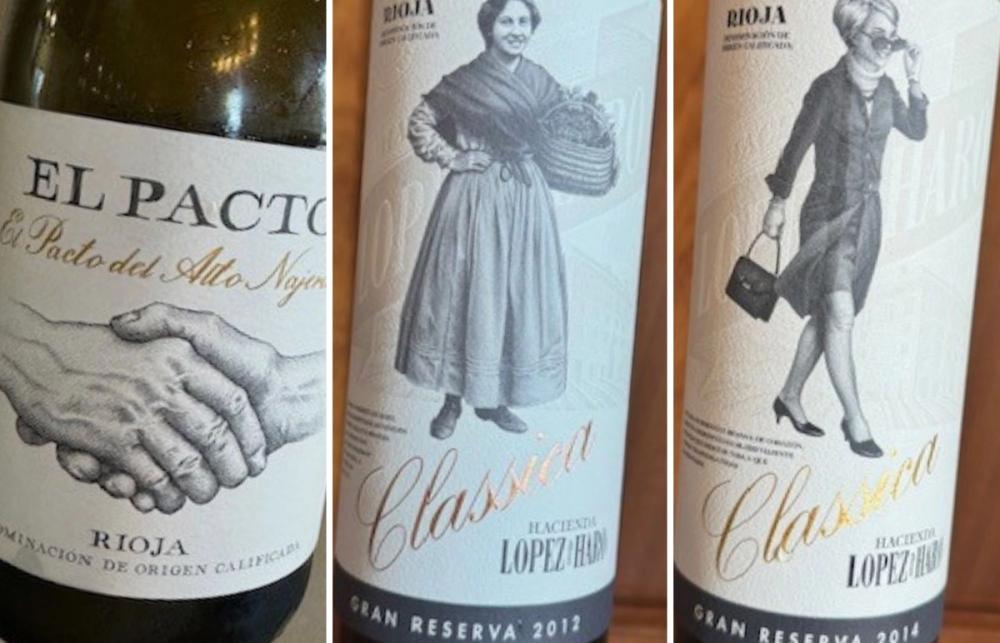
The sommeliers were hugely impressed by the quality but also the value of the Lopez de Haro wines
The last winery visit of the trip saw us heading up to the village of San Vicente de la Sonsierra to Bodegas Classica and their Lopez de Haro range. The family are originally from the upper Najerilla valley, and own 150 hectares across both Sonsierra and Alto Najerilla. From there they have access to both exceptional, fresh and pure red and white varietals.
Their El Pacto de Alto Najerilla 2022 is a Viura dominant field blend that managed to show cool climate freshness and zip, even in what was otherwise a warm year. This only went to highlight what altitude and aspect can do for vineyards in the upper reaches as you head south down the Najerilla tributary. But the best was yet to come.
The Gran Reserva Rosado 2012 and the Gran Reserva Blanco 2014 stopped pretty much the whole group in their tracks. The rosado was quite simply the finest rosé I’ve ever tasted, with incredible structure and freshness, super long finish, and flavours of bruised fruits, butterscotch and caramel.
“That’s going straight on the list!” exclaimed Marique, whilst consultant sommelier Romain Audrerie was astounded at the relatively low prices for such high-quality wines. “The Gran Reserva whites we’ve tried are an absolute steal!”
There should be a huge market for these deep, complex whites and rosés. “The world has enough fresh whites and rosés, so if you can give me structure and oak, then I’m in,” declared Morgan Vanderkamer of the UNioN Wine Bar & Kitchen in Waterford Ireland and president of the Irish Guild of Sommeliers.
After years of seeing the market for rosé become about two polar opposite styles, maybe it’s just a case of trying to remember there’s more out there? “I’ll be honest,” admitted Oliver Shore of The Arts Club, “I’d forgotten just how good those traditional style rosados and blancos from Rioja are. I’m very glad I’ve been reminded.”
Within Spain, Rioja is now number two in terms of white wines sold, placed only behind the white wine meteor of Rueda. This means that the confidence is flowing once again and more fabulous whites of varying styles, such as Flor de Muga, Ysios Blanco, Paco Garcia’s La Ponza Reserva, and MacRobert y Canals L’aventura Viura will be hitting our shores in the years to come.
A visit to Rioja is a must
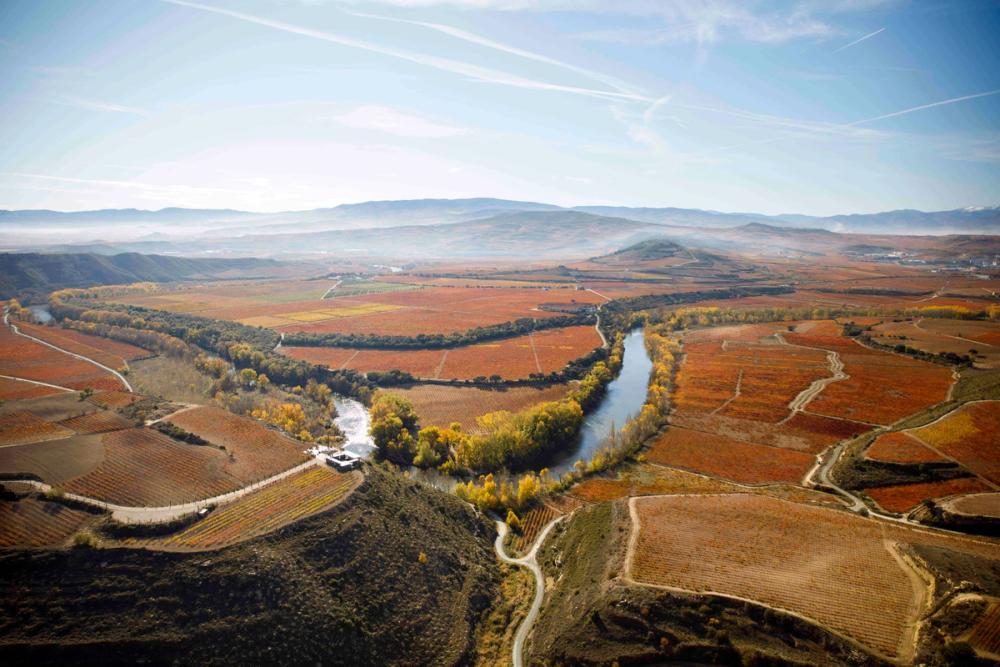
The stunning Rioja wine region has so much to offer wine professionals
The Consejo revealed that Rioja welcomed 880,000 visitors in 2023, with around 30% of those coming from outside of Spain. To add even more to the wine tourism element, the Consejo have just launched an AI generated tool for visitors to plan itineraries based on budgets, interests and the all important time available.
On this trip of 11 sommeliers, 10 were visiting the region for the first time and were engrossed in the street and bar life of the main town of Logroño. Whether tasting through the niche delights at Roots wine bar or enjoying the Crianzas and Claretes during a pintxos bar crawl down the famous Calle Laurel, this really is a place for wine lovers and professionals to hang out and enjoy the atmosphere.
* Huge thanks to all the wineries and professionals in Rioja who gave up their time to host 2024’s sommelier group from the UK and Ireland.
* For more information about the regions, wines and winemakers mentioned in this article, as well as more information on visiting Rioja, please contact the Rioja Wine UK team on Rioja@thisisphipps.com.
* To learn more about Rioja and its wines, visit the Rioja Wine Academy, a fantastic online platform offering free educational courses for trade and consumers alike. There are six courses available on the platform from introductory courses right through to the Rioja Wine Diploma, which covers everything from grape varietals to styles of wine, regulations on viticulture to gastronomy and history. To register for a course, head to riojawineacademy.com.
* Mike Turner is a freelance writer, presenter, educator, judge and regular contributor for The Buyer. You can contact him at mike@pleasebringmemywine.com.
* Funded by the European Union.
